Get PeakVisor App
Sign In
Search by GPS coordinates
- Latitude
- ° ' ''
- Longitude
- ° ' ''
- Units of Length

Yes
Cancel
Share ×

Scan the QR code and open PeakVisor on your phone
❤ Wishlist ×
Choose
Delete
On March 1, 1872, President Ulysses S. Grant signed the Yellowstone National Park Protection Act into law, forming the world’s first national park. The park, which spans an impressive 3,472 square miles, is larger than both Rhode Island and Delaware combined and aims to protect and preserve striking geothermal features, a wide variety of plant and animal species, and hundreds of beautiful lakes, canyons, rivers, and extraordinary summits.
Yellowstone is best-known for its highly accessible geothermal features and lively volcanic landscape. In fact, the park contains half of the world’s geysers and hydrothermal features. But, unbeknownst to most visitors, the bubbling geysers and hot springs are actually an indication of volcanic activity taking place right below their feet. Yellowstone National Park actually sits directly over an active supervolcano.
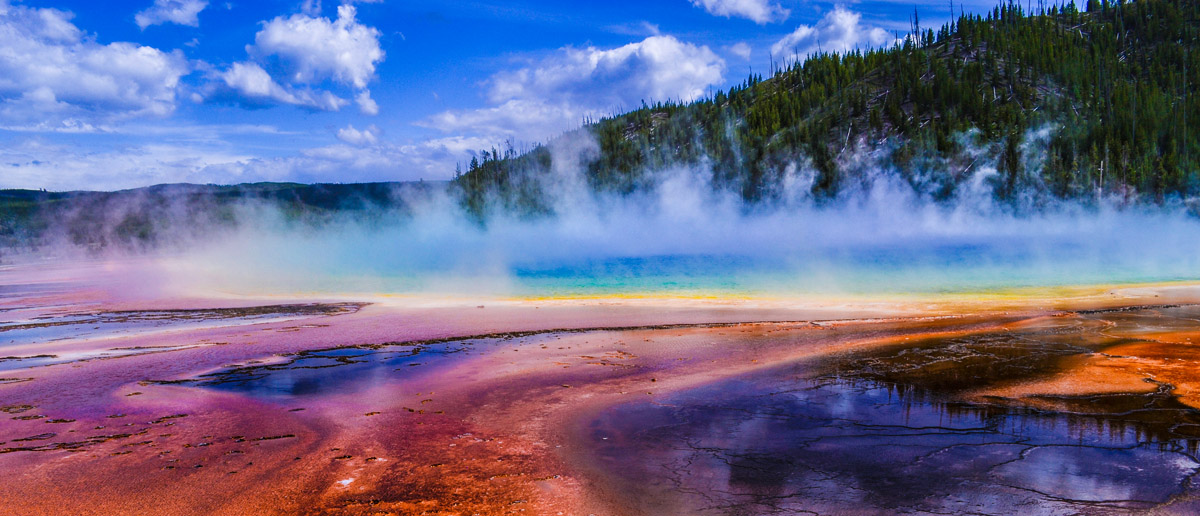
The Yellowstone region has produced three extraordinarily large volcanic eruptions in the past 2.1 million years, all of which sent enormous volumes of magma and volcanic ash into the atmosphere. To put things into perspective, these eruptions were approximately 2,500 times larger than the eruption of Mount Saint Helens in Washington state in 1980.
The most recent eruption, which occurred 640,000+ years ago, formed the 35-mile wide, 50-mile-long Yellowstone Caldera. The Yellowstone Caldera, which is also referred to as the “Yellowstone Supervolcano” or “the world’s restless giant,” still powers the park’s most iconic geysers, hot springs, fumaroles, and mud pots with magmatic heat.
The park’s namesake lake, which sits above the Yellowstone Caldera, is one of the largest high-elevation lakes in North America - It’s roughly 20 miles long and 14 miles wide, featuring over 140 miles of shoreline. Aside from being a popular destination for outdoor recreation, Yellowstone Lake also contains the largest population of wild cutthroat trout in North America – a fascinating mystery, considering the fact that cutthroat trout are Pacific Ocean fish and the lake drains into the Atlantic.

In addition to a plethora of geothermal features and stunning high-elevation lakes, Yellowstone houses approximately 165 named summits. There are four mountain ranges in the park – the Washburn Range, the Red Mountains, the Gallatin Range, and the Absaroka Range. Over 50 summits reach over 8,000 feet in elevation and the tallest peak, Eagle Peak, reaches 11,362 feet.
The Washburn Range and Red Mountains are minor mountain ranges that contain several significant, 9,000+ foot summits like Mount Washburn, Dunraven Peak, Mount Sheridan, and Cook Peak. Mount Washburn in particular is a popular destination for hikers looking for sweeping views of the Grand Canyon, Yellowstone Lake, and the Teton Range.

The Gallatin and Absaroka Ranges are much larger mountain ranges that span several states and extend beyond the boundaries of the park. The Gallatin Range dominates the northwest corner of the park while the Absaroka Range, the largest range in the park, runs through the entire eastern side of the park. Both ranges are subranges of the larger Greater Yellowstone Rocky Mountains and they contain several craggy, 10,000+ foot summits like Electric Peak, Joseph Peak, Mount Holmes, Eagle Peak, Mount Schurz, Abiathar Peak, and Atkins Peak.

Outside of the parks four mountain ranges there are a number of isolated peaks scattered across the plateaus. These peaks include Yellowstone gems like Mount Hancock, Barlow Peak, and Channel Mountain.
Yellowstone is one of the busiest and most beloved national parks in the states. The park can be accessed from five different park entrances and houses nine visitor centers and museums. A number of historical buildings can also be found within the park, including the Old Faithful Inn and Fort Yellowstone – two of the park’s National Historical Landmarks.
There are over 1,100 miles of hiking trails to explore and more than 2,000 campsites available. Not to mention, visitors can experience more than 300 active geysers, hundreds of waterfalls, and learn about the park’s astounding archeological discoveries.
Another thing that attracts millions of visitors to Yellowstone is the park’s amazing wildlife and the ability to spot wildlife along park roads. In fact, Yellowstone is considered to be one of the very best wildlife habitats in the lower 48. There are 60+ species of mammals in the park including timber wolf, threatened Canadian lynx, and grizzly bears. It’s not uncommon to see wild bison, elk, bear, and moose meandering along park roadways or nearby in open prairies.
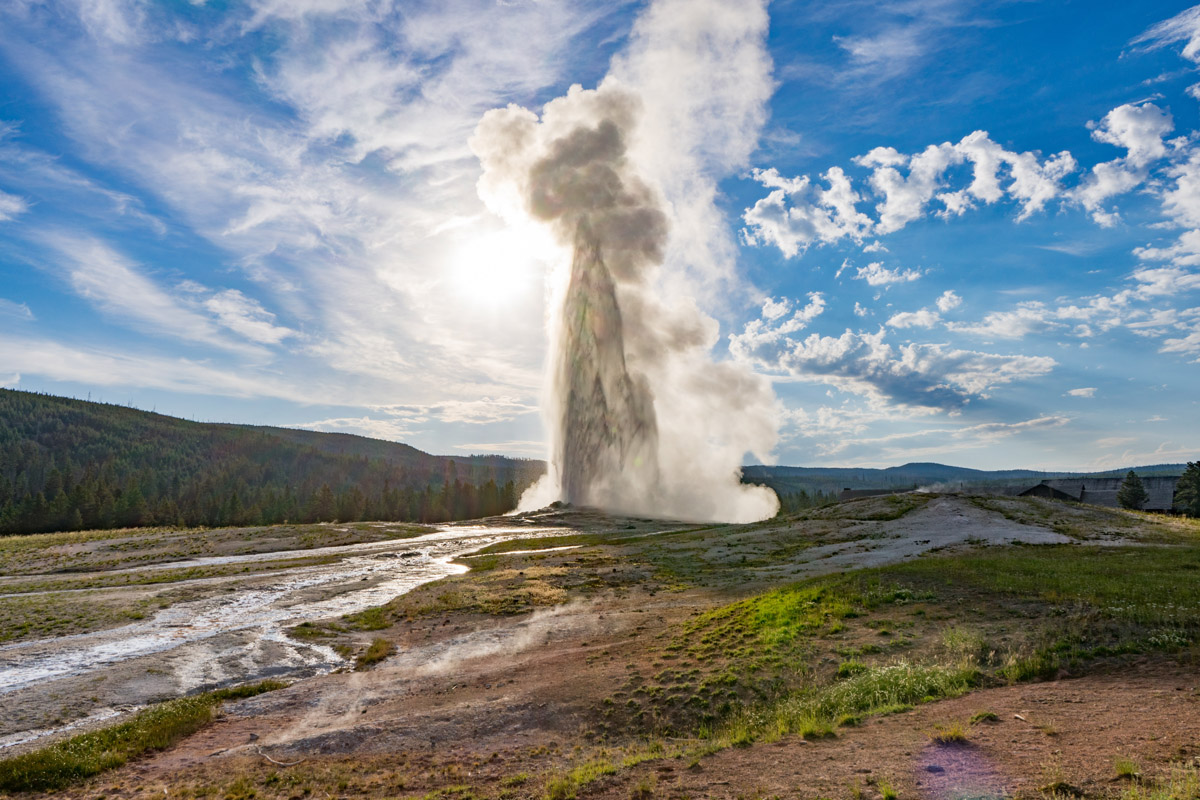
A trip to Yellowstone wouldn’t be complete without visiting the park’s most iconic geyser. Old Faithful is a cone geyser and the first geyser that received a name in the park. Oddly predictable, Old Faithful has erupted every 44 minutes to 2 hours for decades. Eruptions can shoot up to 8,400 gallons of boiling hot water to a height of 100 to 185-feet in the air. Watch eruptions from the Old Faithful viewing area or along the boardwalks that weave around the geyser and through the Upper Geyser Basin. The nearby visitor center and lodge will have information related to when the geyser is expected to erupt.

Old Faithful might be a lot more popular, but Grand Prismatic Spring is equally as impressive. Arguably the most photographed attractions in the park, the Grand Prismatic Spring is a vibrant, tecno-colored, hot spring that is deeper than a 10-story building and bigger than a football field. The spring, which reaches 370 feet in diameter, is the third largest in the world. Not to mention its magnificent multicolored layers are truly one-of-a-kind and are guaranteed to leave you awe-struck. The Grand Prismatic Spring is located within the Midway Geyser Basin. If you have additional time, consider checking out the Excelsior Geyser, Turquoise Pool, and Opal Pool.
Uncle Tom’s trail takes visitors from the top of the Grand Canyon of Yellowstone to the base of 308-foot Lower Falls via a seemingly endless set of stairs. The vertical elevation makes this trek somewhat strenuous, but the payoff is well-worth the climb. If you’re lucky, you might even catch a rainbow cutting through the falls’ mist.
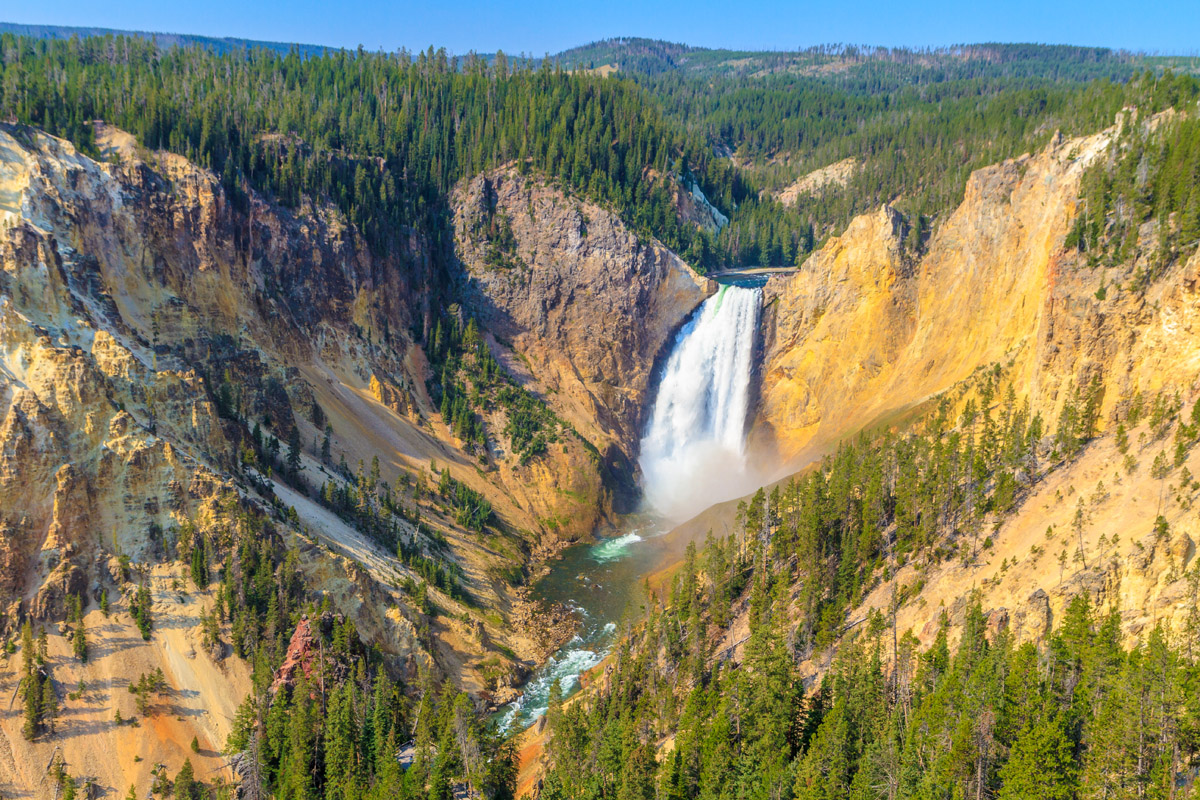
Experience a 24-mile-long canyon steeped in complex geologic history from a variety of overlooks, at different times of day, and at different seasons. A number of trails and walkways wind along the rims and down partway into the canyon including the South Rim Trail, North Rim Trail, and Artist Point. The canyon is between 800 and 12,000 feet deep and is the result of erosion caused by the Yellowstone River.
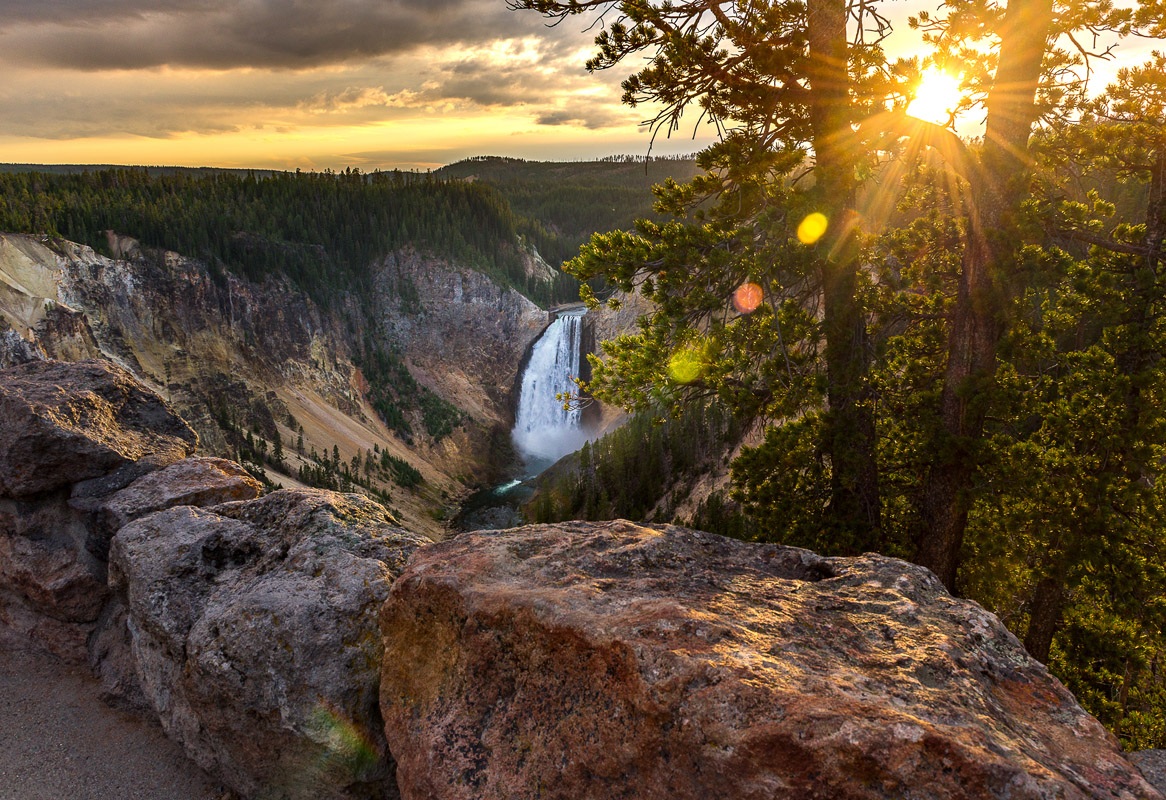
A Yellowstone classic, the trek to the top of Mount Washburn follows a set of forested switchbacks to sweeping views of some of the park’s most iconic features like Old Faithful and the Grand Canyon. The trail begins at the parking lot at Dunraven Pass and meanders for approximately 4.5 miles before reaching panoramic views of the surrounding wilderness. Washburn is named after General Washburn, a surveyor who once climbed to the summit looking for the best route to Yellowstone Lake.
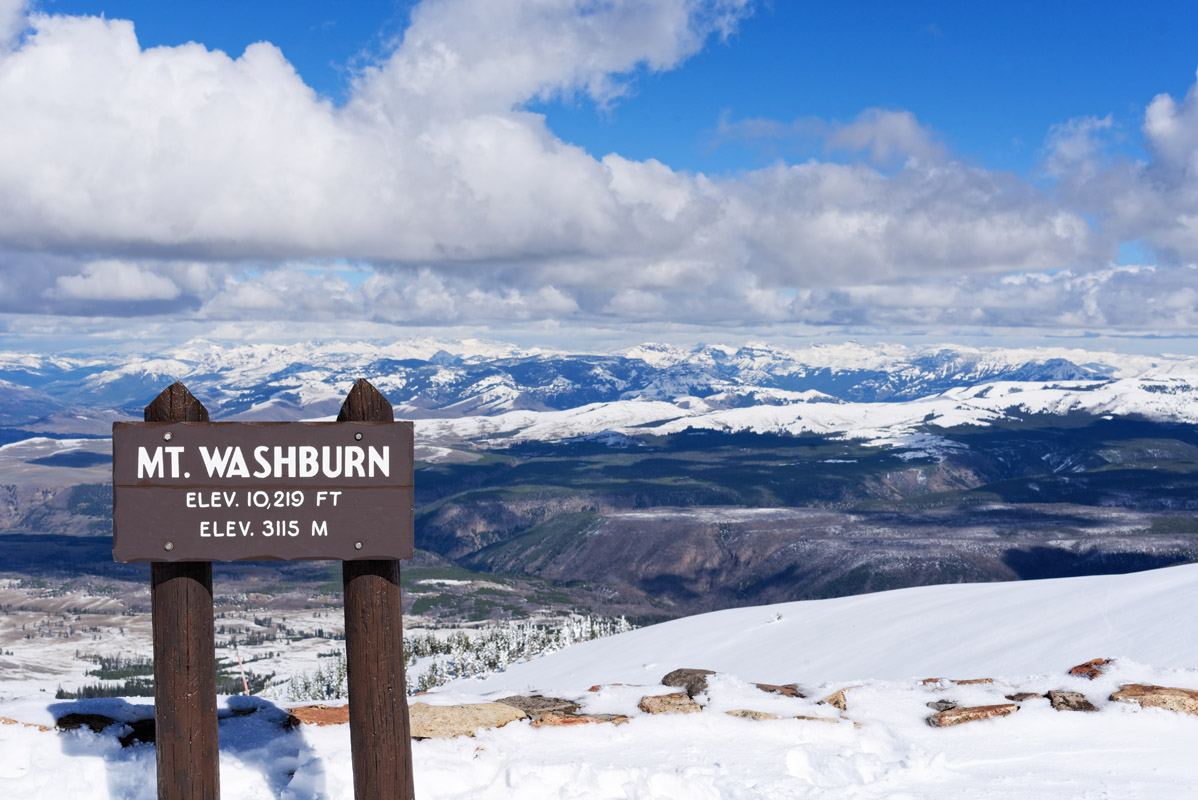
Yellowstone is idyllically located within close proximity to several major cities including Jackson Hole, Bozeman, Cody, Big Sky, West and East Yellowstone, Red Lodge, and Ennis. Because of the park’s sheer size, it’s important to know which park entrance and attractions you’ll be visiting prior to booking your accommodations. It’s not uncommon for visitors to break up their adventure by exploring several different regions of the park.
If you’re hoping to Grand Teton to your bucket list, consider staying near Jackson Hole so you can venture into both parks! All of the cities listed above offer unique accommodations, easy access to the park, and plenty of restaurants and amenities to choose from.
Yellowstone is home to nine lodging facilities that offer over 2,000 rooms within the park boundaries. Lodging facilities are all unique and offer a variety of amenities. Several of the lodges are historic and humble, offering visitors the perfect retreat in the Yellowstone wilderness. Despite the abundance of accommodations available, reservations should be made well in advance. The park’s incredible popularity makes snagging a reservation difficult if you’re visiting during peak season.
Lodges include:


Explore Yellowstone National Park with the PeakVisor 3D Map and identify its summits.








